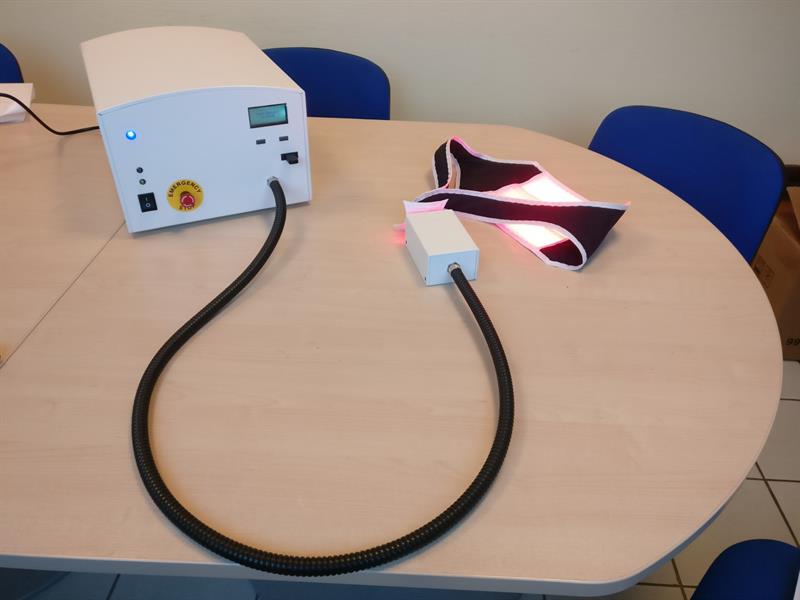The laser fabric, FLUXMEDICARE, uses the latest photonics technology and is made in collaboration with a pan-European health consortium, PHOS-ISTOS. It is claimed to be the quickest device on the market at eradicating unwanted skin conditions, with no side effects.
FLUXMEDICARE works by covering the affected area with a ‘photosensitiser’ cream then wrapping the skin with the light-emitting textile. Optical fibres knitted into the fabric then speed up the reaction between oxygen and the photosensitiser cream beneath the skin.
Dr Nadege Boucard, R&D general manager at Texinov explained: “FLUXMEDICARE is unprecedented in the field of treating skin conditions. Since the lighting textile wraps around the unique, individual contours of a patient, the emitted light in our device is the same at every part of the body under treatment, meaning the beams are homogenous.”
 Prior to FLUXMEDICARE the only technology used to treat skin ailments came in the form of Photo Dynamic Therapy (PDT) where a patient would stand under a lamp blasted with light from a flat pane. But the intensity of the treatment would cause severe pain and redness to the skin.
Prior to FLUXMEDICARE the only technology used to treat skin ailments came in the form of Photo Dynamic Therapy (PDT) where a patient would stand under a lamp blasted with light from a flat pane. But the intensity of the treatment would cause severe pain and redness to the skin.
“Previous PDT was unsatisfactory in many ways.” Dr Boucard said, “Not only did patients report a pain ranking of at least 7/10 as well as burns and redness persisting for several days, but also, coming from a flat source, a lot of the emitted light was ‘lost’.”
During clinical trials, patients reported an average pain ranking on the FLUXMEDICARE device of between 0 and 1 out of 10.
PDT technology costs upwards of €15,000 for the lamp and protective gear and requires a dedicated set up in a hospital room or a dermatologist’s surgery. Comparatively, the FLUXMEDICARE system currently costs around a third of the price.
“The FLUXMEDICARE device is flexible and mobile so a number of patients can be treated simultaneously,” said Dr Boucard. “In the future we hope to treat people in their own homes. The implied healthcare savings are substantial.”
The PHOS-ISTOS team expects to have the product ready for commercial uptake in April 2018.





